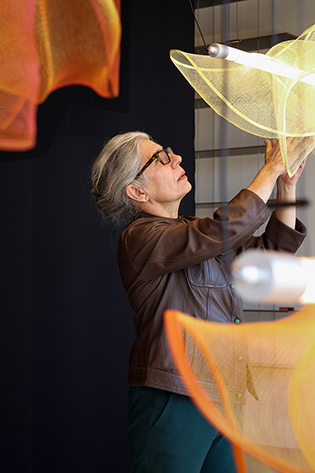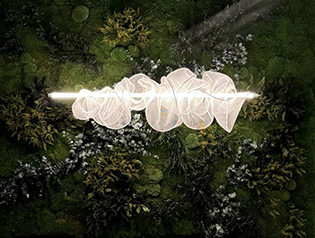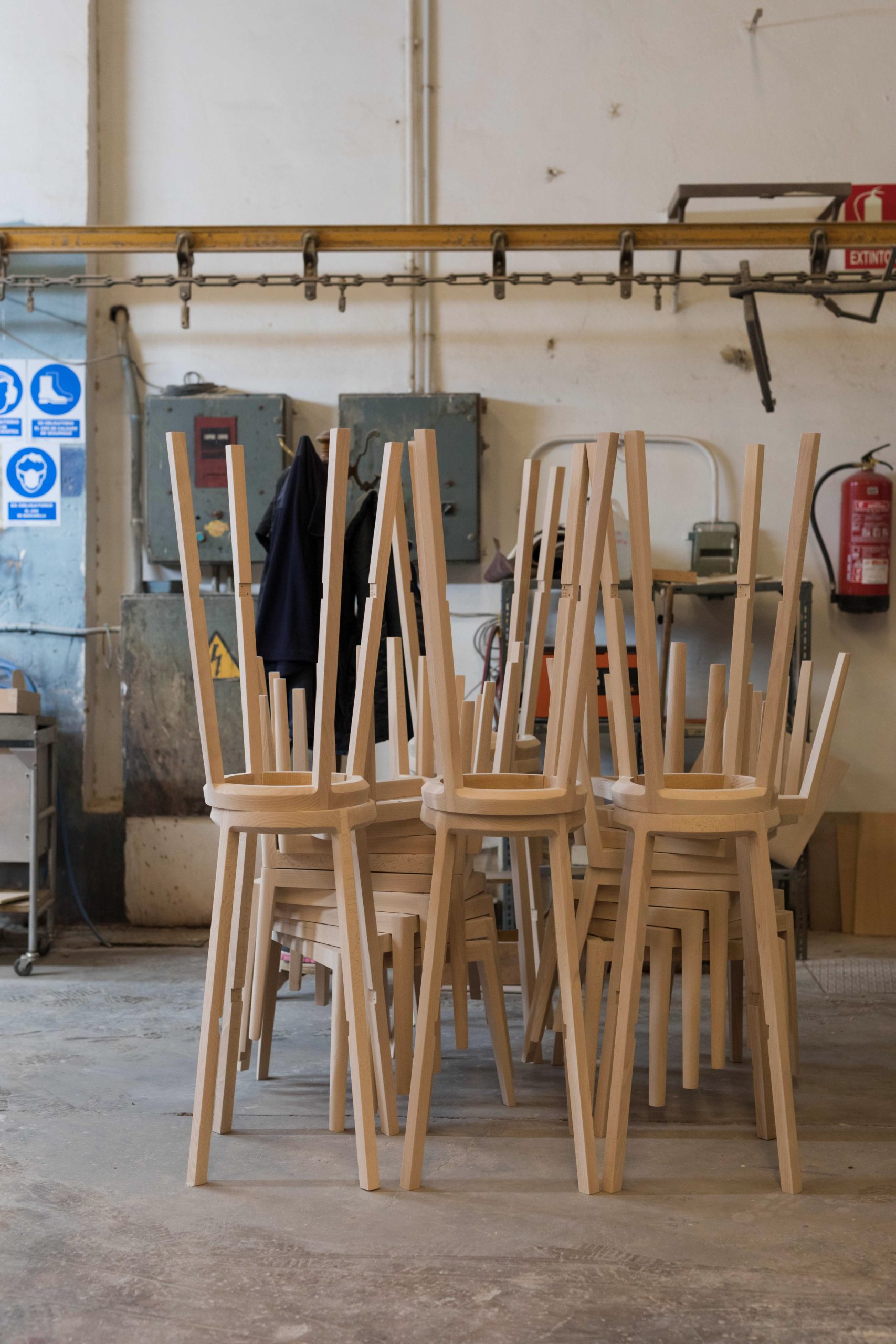A giant of Italian design, Enzo Mari (1932–2020) was a gifted and prolific furniture and product designer. Original and uncompromising, Mari was a pioneer, an activist, a critic, and an artist. As a designer, it is said that he ‘thought creatively and built logically‘. Mari believed in communism: for him, design was a ‘democratic utopia’, and his desire was to build a better, more equitable world.

Enzo Mari in 2010. Photo: Leonardo Cendamo/Getty Images via The Guardian.
With a career spanning sixty years, Enzo Mari created more than 1,500 designs for a number of companies, including Artemide, Zanotta, and Magis. He is perhaps best known for his work with Danese Milano, the Italian brand founded in 1957 by Bruno Danese and Jacqueline Vodoz. Danese Milano combines art and design, in an ongoing project that is both cultural and industrial. Danese and Vodoz understood the value of bringing art into everyday life, viewing it as a ‘conceptual social revolution [that] would affect the power and role of industrial design.’ Mari, along with architect and artist Bruno Munari, were the first designers to collaborate with Danese Milano: the two men worked on developing products, multimedia projects, exhibitions, and books. Many of Mari’s classic designs and artworks for Danese Milano remain in production, including: the Formosa and Timor perpetual calendars, the Uno, La Mela and Duo, La Pera silkscreen art prints, the 16 animali wooden puzzle, the Putrella tray, and the Paros H and M vases.

Formosa perpetual wall calendar (1963). Image © Danese Milano.
Enzo Mari’s political ideas were expressed in his definition of good design, described as: sustainable, accessible, functional, well made, emotionally resonant, enduring, socially beneficial, beautiful, economic, and affordable. One Mari project that exemplifies the democratisation of design is Proposta per un’autoprogettazione: Proposal for self-design. Published in 1974, this was an instruction manual on how to make furniture, using wood and nails. Autoprogettazione was a self-help guide, an economical way to create furniture pieces—including chairs and tables—and at the same time educate oneself about the process of production. Mari sent his instruction manual to anyone who requested a copy, asking them to simply cover the cost of postage. Autoprogettazione was the antithesis of mass-produced design, a lesson in avoiding the pitfalls of unnecessary indulgence and excess.

Autoprogettazione Sedia (1973). Photo © Fondazione La Triennale di Milano.
While Enzo Mari strived to ensure his work was affordable, he nonetheless believed that those making his products should be paid well. Mari had left school at a young age, taking odd jobs to help his mother, after his father became ill. He understood the value of labour, and learned by doing—with a hands-on approach—and observing people. At nineteen, he was able to enrol at the state-run Brera Academy in Milan, where he studied painting, sculpture, and then stage design. Mari was especially interested in the planning of perceptive structures and the methodology of design. He met Bruno Danese in the 1950s, as Danese was establishing his eponymous company. The encounter would set the stage for Mari’s career as a designer: his first design for Danese, 16 animali, was a great success.

The 16 animali wooden puzzle (1957). Image © Danese Milano.
Enzo Mari was not afraid to engage in debate about design; he was ‘the thorn in the system’s side’. Mari was concerned about the plight of design students (with too many design schools turning out too many designers, how could they survive), and the future of factory workers. He despised consumerism and design for design’s sake. Mari believed design schools should teach rules and not creativity, a common design grammar shared by all. ‘If someone tells me to be “creative” I just want to give him a punch in the face,’ Mari said in a 2009 interview with Icon Magazine.

Enzo Mari photographed on his Autoprogettazione Chair in 2010. Photo © Jouko Lehtola for Artek.
In what might be considered an act of defiance, Enzo Mari left his entire archive to the city of Milan, on the condition that it is not shown for forty years. His justification for this, writes Stefano Boeri, the president of the Triennale Milano:‘it will take forty years before a new generation that is not “spoiled like today’s generation” would be able to make informed use of it, taking back control of the profound meaning of things.’ A major exhibition of Mari’s work is on show at the Triennale Milano until 18 April 2021, after which no one will have access to his archive until at least 2060.
Enzo Mari passed away on 19 October 2020, following complications related to Covid-19. His wife, the Italian curator and art critic Lea Vergine, died the following day, also from Covid-related conditions.

Playing with the 16 animali puzzle. Photo via Dezeen.

Uno, La Mela, silkscreen print (1963). Part of the Nature Series (Serie della Natura). Image © Danese Milano.

Due, La Pera, silkscreen print (1963). Part of the Nature Series (Serie della Natura). Image © Danese Milano.

Timor perpetual calendar (1967). Image © Danese Milano.

Putrella table centrepiece (1958). It is produced in a limited edition of 100 pieces per year. Image © Danese Milano.

(L to R) Paros H Calacatta marble vase, Paros M Aurisina stone vase, and Paros D1 black Marquina marble ashtray/centrepiece (1964). All produced in a limited edition of 100 pieces per year.













